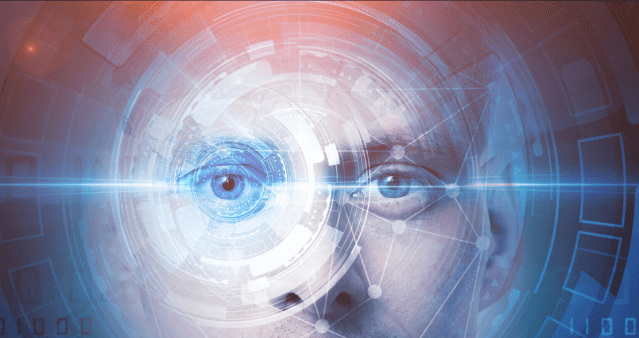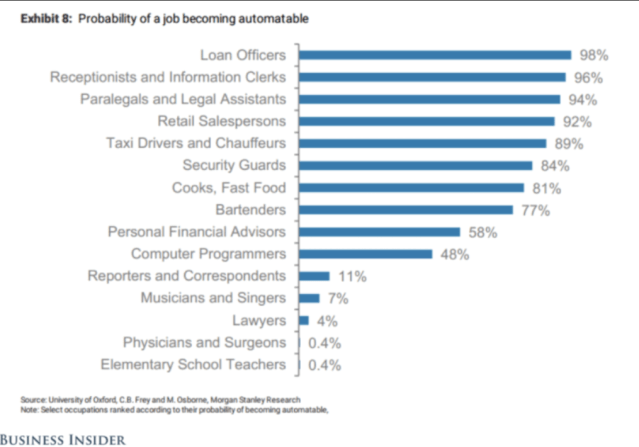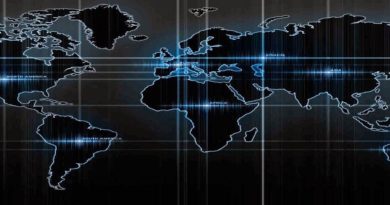Sinister Aims of the World Economic Forum’s Fourth Industrial Revolution (Great Reset) Exposed
In today’s society, high-tech technologies are affecting our daily lives in ways that indicate we are at the cusp of a Fourth Industrial Revolution (4IR), an era that builds and extends the impacts of digitalization in new and unexpected ways. The end game is a technocratic grid where AI controls everything.

Let’s not lose touch…Your Government and Big Tech are actively trying to censor the information reported by The Exposé to serve their own needs. Subscribe now to make sure you receive the latest uncensored news in your inbox…
By Sikh For Truth – Editor of Truth Tal UK & Contributor to The Expose
In the First Industrial Revolution, we switched from using animals, human efforts, and biomass as primary sources of energy to fossil fuels and mechanical power.
Between the end of the 19th century and the beginning of the 20th century, the Second Industrial Revolution brought breakthroughs in electricity distribution, radio, wireless, and wired communication.
The Third Industrial Revolution started in the 1950s and saw computers and IT emerge. As a result, manufacturing, production, and the banking, energy, and communications industries have increased in automation.
4IR now promises cutting-edge science, long-term health, GDP growth, but it also means AI robots and quantum computing will outperform humans in a lot of fields.
– Klaus Schwab, The Fourth Industrial Revolution. (source)
According to Klaus Schwab, the Fourth Industrial Revolution aims to dominate the world. Humans are becoming lifeless, soulless consumers in a digital quagmire of social media entertainment, relinquishing their own data because they feel that big brother will take care of them.
4IR:
Industry 4.0, or 4IR, is the 4th industrial revolution we’re living through right now. Digital, biological, economic, and physical paradigms are convergent and impacting all industries and economies at once.
From the WEF article: What is the fourth industrial revolution? –
The ‘Fourth Industrial Revolution’ is the panacea for contemporary development problems, says the WEF. This is what’s going to drive the AI economy in the future. In recent years, it has been one of the central pillars of Klaus Schwab, the founder and executive chairman of the World Economic Forum.
In 4IR, humanity and machines will be able to fuse through the advent of “cyber-physical systems.” Further examples include genome splicing, machine intelligence, and e-government based on digital identities and smart contracts.
Technology and systems involved in the new revolution could mean a lot of wins and losses for individuals and groups.
And as Schwab has said: “The changes are so profound that, from the perspective of human history, there has never been a time of greater promise or potential peril.”
Klaus Schwab, the founder and executive chairman of the World Economic Forum and author of “The Fourth Industrial Revolution” called today’s advances a new revolution.
In a 2016 article, Schwab wrote “Like the revolutions that preceded it, the 4IR has the potential to raise global income levels and improve the quality of life for populations around the world.”
AI, Blockchain, Quantum Computing, Virtual Reality, Augmented Reality, Metaverse Technology, Biotechnology, Robotics, and the Internet of Bodies are some of the 4IR technologies.
“The 4IR is therefore not a prediction of the future but a call to action.” – Said Klaus Schwab.
In the 4IR, computational tools become literally embedded within us and can change who we are at the genetic level. Within a generation, new extended forms of radical human improvements will be available.
The 2020 pandemic changed our world in many ways, but perhaps the biggest change was the speed at which digital transformation of health data and 4IR moved. Now all these technologies are converging, and it’s not for the better.
According to Hiroshi Tasaka Honorary Professor, Tama University “The COVID-19 crisis is going to accelerate several changes and transformations in human society. Notably, the pandemic is expected to significantly accelerate the Fourth Industrial Revolution.”
Due to the crisis, people stayed home and minimized contact to contain the spread of infections. Because of that, contactless technologies became more popular.
The WE Forum found that 70% of the 169 UN SDG targets that are foundational to the UN Global Goals could be enabled by technologies already in play as part of 4IR.
Data & Analytics:
Klaus Schwab.
WEF 4IR sees humans as data commodities to be controlled, monitored, mined, and tracked just like lifeless robots, drones, and AI that are being openly promoted to replace us.
The core driver behind 4IR is data, the bits and bytes: “As data becomes the currency of our digital lives, companies must ensure the privacy and security of customer information”
Marc Benioff the Salesforce Chairman and CEO.
This is part of KYC – Knowing the Customer: However, research has found that 57% of customers are uncomfortable with how companies use our personal data and almost two-thirds 62% are more afraid of their data being compromised now than they were two years ago.
“Deploying AI will require a kind of re-boot in the way companies think about privacy and security,” Benioff added. “AI is fuelled by data. The more the machine learns about you, the better it can predict your needs and act on your behalf.”
Business intelligence, predictive analytics, and machine learning will drive the 4th Industrial Revolution, which already requires advanced IT, math, and statistics skills. However, AI and machine learning algorithms can automate and optimize most analytic processes, which leads to crucial business insights.
In the last two years, the world produced 90% – 2.5 quintillion bytes a day – of all the data out there. Strategy-business.com reported in 2019 that
In addition to smart clothes, smartwatches, and smartphones, smart buildings and smart cities also create data. The next big smart product that’s going to make people’s lives better will be smart cities, which are slated to be worth $2.57 trillion by 2025.
Smart cities, on the other hand, rely on the internet of things to collect data in real-time, which can be used to provide insights for better managing assets, resources, and e-government services. There’s everything from refuse collections to urban planning developments.
Cutting-edge tech involves designing or feeding new AI systems that can curate data sets in meaningful ways so they can be fed into neural networks.
Technology is a tool; it is neither good nor bad. However, to what end it is implemented can certainly make it so.
“There has never been a time of greater promise, or one of greater potential peril,”
Schwab has said, predicting that the greatest societal concerns associated with the 4IR would be inequality.
Jobs:
The 4IR could increase unemployment, so it’s not all good news. Up to 45% of all jobs will be automated or eliminated in 20 years. Robotics, AI, drones, and automated smart driving are all proliferating in society to respond to the COVID crisis, which will cause massive unemployment. There are going to be a lot of jobs lost in this upcoming revolution.
Historically, every previous wave created more jobs than it destroyed, and delivered exponential gains in living standards, life expectancy, business productivity, and economic and consumer growth. There’s a fear that this time the change may be so rapid and massive that it will be detrimental and disruptive, even threatening individual livelihoods and social cohesion.
According to the WEF the following jobs are most at risk:

Organizing transport, booking restaurants, buying online groceries and other goods, making bank payments, listening to music, reading books, or watching movies – nowadays these things can be done instantly, anywhere, anytime.
And as Schwab puts it:
“The benefits of technology for all of us who consume are incontrovertible.”
According to WEF’s Forum’s Global Risks Report 2016, there are dangers ahead, including fragmentation, segregation, and even social unrest in a hyper-connected world. That’s why UBI’s being rolled out all over the world.
Zvika Krieger, co-leader of the world economic forum’s center for the 4IR.
However, the WEF goes on to admit that hospitality, management, and creativity cannot be in any way substituted by AI.
China is already a leader in 4th Industrial Revolution:
A “Fourth Industrial Revolution” first emerged at the World Economic Forum in 2015, and the CCP embraced it right away.
The CCP believe that the world has entered a period of “great changes unseen in a century.” And at the core of these changes is a shift in the balance of power between the US and China – geopolitically, and one of the key drivers of that change is the onset of a new round of technological innovation which Xi Jinping and others have sometimes referred to as the “Fourth Industrial Revolution.”
China’s leaders believe the next decade to 2030 will largely determine who leads the next industrial revolution. “The next ten years will be a key decade,” Xi argued.
They would bring “earth-shaking changes” while offering an “important opportunity to promote leapfrogging development,” thus allowing China to bypass all legacy systems and overtake its competitors.
The Shanghai Exchange allows Chinese companies to maximize the value of their businesses by collecting data, while allowing purchasers to use it to raise their productivity. It’s all about putting data in the hands of entrepreneurs.
The 4IR runs on AI, and data fuels it. Hundreds of millions of digitized medical histories and DNA scans / swabs in China make AI-driven research possible at a fraction of the cost of trial-and-error methods in the West.
Digital Identity:
One of the most important factors of 4IR is of digital identities and biometrics.
Take this report from the Brookins institute on how 4IR and digitization will transform Africa into a global powerhouse. It said that:
According to a WEF insight report on digital identity from 2018:
Under the Global Agenda > Fourth Industrial Revolution – Harnessing the Fourth Industrial Revolution, we can directly link the Great Reset concept to the 4IR.
The WEF talks about harnessing the 4IR to drive forward the “Great Reset” agenda and it writes:
Digital identities are a core part of the material makeup of the 4IR.
In the enabling a sustainable 4IR report from May 22, 2017, it talks about how the G20 can create conditions for emerging technologies to benefit people and the planet. As part of the 4IR, the G20 countries should support the work being done to give everyone in the world a unique digital identity.
The document wrote:
According to an Aadhaar white paper our:
And in a February 2022 WEF report, “Digital Agency Development: The Power of Data Intermediaries,” the World Economic Forum was said to support digital identity laws in the United States and the European Union. WEF staff there found that the Covid-19 pandemic underlined the “power of medical data” for so-called vaccine passports, which could form the basis of a new “digital identity system”.
“These passports act as a form of digital identity” the report quoted to access meeting places such as bars or restaurants and can address digital inequality, the report said. “On a collective level, the vaccine data represent a critical public health benefit.”
While the passports are already available electronically on smartphones, WEF founder Klaus Schwab talks about implanting digital IDs directly into people, which is already starting to be promoted.
Gavi the Bill Gates Vaccination alliance even goes on to admit that the use of biometrics and contactless digital identification in health solutions and other digital health platforms are concepts of the incoming Fourth Industrial Revolution (4IR) technologies.
In a most recent WEF Report published April 12th, 2022: “The promise of Trade Tech: Policy approaches to harness trade digitalization.”
The report mentions using the digital identity data for “Social and environmental compliance; know-your-customer processes; anti-money-laundering processes”.
They’ll use any excuse to implement digital identity. This time it’s for trade digitalization. But the end goal is still the same: “Encouraging the development of a global certification frameworks.”
The digital identity agenda is a coordinated attack against humanity to bring in the 4IR and that by design, is to plug every human being into the smart 5G data grid, inside their smart cities, where a virtual and augmented metaverses and AR reality awaits.
According to Klaus Schwab, founder, and executive chairman of the World Economic Forum (WEF), the goal of the 4IR is to change what it means to be human by merging man and machines.
And Schwab describes this as transhumanism, his demented vision is a “fusion of physical, digital and biological identities”.
Transhumanism is the end goal of the Great Reset which paves the way for 4IR. Transhumanism is also known as synthetic biotechnology for designing and constructing new biological and digital systems.
These past few years have been about two main things, the implementation and acceleration of the UN 2030 SDG’s and the WEF’s 4IR.



